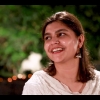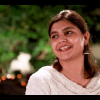Azeez Tharuvana: The plurality of the Ramayana is considered its unique feature. There are innumerable Ramayanas in the form of written texts and oral narratives. How do you look at this?
K.M. Anil: Written texts in fact have created a different culture within our culture. Written texts have become an integral part of our lives now. But the emergence of writing and written texts have in reality created a deep fissure within society: society got divided into those who write and those who do not. That is the politics of writing. So in many ways, the emergence of written texts caused the creation of classes in human society. Writing became cultural capital. So, those who have this capital and others who don’t—that is one classification of human societies.
Written texts have in many ways tried to adopt oral stories, songs and the imagination. But this adoption were not as harmless as it would seem to be. There were many layers of sanitization that happened in the course of this adoption. So now, what could be adopted from oral narratives to the written texts? What should not be brought across? Whose interests should be preserved? Whose interests should be ignored? All these factors played a part in the transition of oral narratives to written accounts. So the writing itself was not an innocent activity. Though written texts tried to bring in the oral Ramayana stories, it did not happen innocently or accidentally. There were a lot of choices and rejections that occurred within this transition. In ancient India, writing was mostly in Sanskrit. Sanskrit had always been a language of culture and power in India. So other languages have tried to imitate the Sanskrit writings. The first Malayalam poem ever found is Ramacharitam (written by Cheeraman in the 13th century). Though it is classified as pattu or song, its literariness is distinct. So this literariness adopted the varied imagination in oral narratives and manipulated it in many ways. So now we realize the transition of oral to written was highly political in India. Therefore, we cannot compare the oral and written narratives in any way. The world of oral narratives is organic and many-layered, connecting the culture, language and geography of a place. On the other hand, the written texts bear the stamp of authority and of course, literariness. So we always try to judge from a literary point of view. That is, we look at the alternative Ramayanas from the viewpoint of Adhyatma Ramayanam Kilipattu (written by Thunchathu Ezhuthachan) or Valmiki’s Ramayana. Actually, the oral and written narratives belong to two entirely different sensibilities. The latter had always tried to exert its power over or to reject the former. The latter is the language of the upper class and power. Therefore, only a sensibility that can overcome that of writing can really understand oral narratives.
A.T.: Several Ramayana narratives can be found among the tribal, Dalit and underprivileged classes of India. How did Ramayana narratives flow to these societies?
K.M.A.: Today what we call South Asian oral Ramayanas have all emerged from the sensibilities and the physical landscape of the underprivileged classes. Actually, the imaginative landscape of the underprivileged is amazing. We have just begun to realize the detailing of the imaginary in the descriptions of oral communities. So, whether it is the innumerable versions of Ramayana in different parts of India or also the versions spread across South Asia, each is unique. Each is different. It happened so because they did not tell the story just for the sake of telling a story. Instead, the story is taken from their own physical surroundings. Ramayana is part of their everyday life. When they name their children, when they pray, when they tell jokes, in their sayings, in their rituals, everywhere, we can see the presence of stories like the Ramayana. In the case of a written story, the story makes its presence only when we resort to telling it or reading it. But it is not so in the oral narratives where the story makes its presence felt in every moment of their everyday life. As I said, it exists in their rituals, ceremonies, jokes, survival mechanisms, etc. So that is why if we go to Bengal, we can see Ramayana in pictures; in Andhra, we see Mahabharata as street plays, also sculptures related to the Ramayana, jokes related to Ramayana. We can see stories that make fun of Rama and Sita in nomadic oral narratives. So these communities have adapted the Ramayana to suit their different landscapes of life. It is not like they have memorized them and handed down from one generation to another like the Vedas and Upanishads. They were part of their everyday life. Sometimes, the stories even shaped the moral codes of the community. In some places we can see that Dushasanan is worshipped. That is because these communities saw these narratives as a way of social criticism to regulate their moral ethics. So in contrast to the written texts, these oral narratives were a way to express not just bhakti, but also criticism, more importantly, self-criticism or social criticism. That is why there have been so many versions of Ramayanas among the tribals, Dalits and other underprivileged classes.
A.T.: How do you look at the tribal narratives of Ramayana in Wayanad?
K.M.A.: Take Adiya Ramayanam for instance. The geography in it, the characters, the morality—everything is entirely different from what we see in Kambar’s Ramayana or Ezhuthachan’s Ramayana. Rama in Adiya Ramayana is just an ordinary man. So in this story, the Adiya eldest tells Rama that he has done wrong in deserting Sita and ask him to take her and the children back. The story says that Rama is chagrined. This is unfamiliar to us. We are used to the written versions where Rama is presented as enforcing his royal or feudal power. But in the Ramayana versions of Wayanad, we see a Sita who is desiccating coconuts, or a Ravana or a Sita crossing the stream. There are no big wars, no bloodshed in Adiyas’ lives or in their idea of the world. Their Ramayanas draw a picture of the peaceful co-existence of Adivasis and nature. For the tribals, Ayodhya is not just a place somewhere else. For them, Ayodhya and Lanka are places in their immediate surroundings. If looked at in this perspective, we can see that Ayodhya is, like we speak of imagined communities (Anderson 1983), the imaginary landscape of every tribal or Dalit. The self-identity created by each man around the story of Ramayana, based on this Rama’s country or Ravana’s country, are all their imagined landscapes. It is like the way the idea of India is imagined—the idea of India was formed during and after the freedom struggle. Before that India was a collection of different sub-nationalities. The oral Ramayana exists in the storytelling of these sub-nationalities. As the written Ramayanas became prominent during the nationalist struggles in the British era, it was manipulated to become a hegemonic text. Or else, the Ramayana stories belonged to the sub-nationalities. There are several sub-nationalities. We can see the beauty of these sub-nationalities in the Ramayana subtexts. We have seen it in the books of Camille Bulcke and A.K. Ramanujan. These local texts have to be given prominence. That is necessary to observe the political duty of strengthening the sub-nationalities, and to bring to the fore the struggles within Indian nationalism.
A.T.: Recently there has been a tendency to reject these alternative versions and to give thrust to a hegemonic text. How do you see this?
K.M.A.: Indian nationalism is in reality imagination. By imagination I don’t mean that it is not real. Man lives out his life within the realms of such imaginations. E.g., the family. Likewise nationalism is something that man has created. It is not eternal. It is historical. So the idea of Indian nationalism was shaped and moulded by the freedom struggles and thoughts of leaders like Gandhi and others. They needed factors that could unify their idea of India. One such factor was literature. Look at the definition. Indian literature is one that was written in several languages. So the idea forms that India has a common literature, India has common musical traditions—Carnatic and Hindustani—has common epics, the Ramayana and Mahabharata. India has a language tradition—that is Sanskrit and the texts written in it. So through a process of sanitization, an idea was formed about the common traditions of India. Just as, as mentioned before, how many middle layers brokered the transition from oral versions to written versions, the idea of tradition itself was brokered through several middle layers. That is when a single Ramayana version, or a version that is suitable to the idea of Indian nationalism, emerged. Even the written version is not just a single one. There are many versions of the written text itself. Like Tulsidas’ Ramayana, the references to Rama by Kabir and Surdas. In Malayalam there are Cheeramakavi’s Ramacharitam, Ezhuthachan’s Ramayanam, in Tamil there is Kambar’s Ramayana. So the written texts themselves are several and varied. The story of Ramayana widens its reach to television, comes in the (Amar) Chitra Katha comics series, animations, and even in school history books where it becomes part of history. Under such circumstances, when myth becomes history, when the alternative versions of the story are rejected and a single version is thrust into the general consciousness, then only can its place in history be secured. Several versions pose a threat to hegemonic politics. So rejecting the multiplicity of versions and reifying the single version becomes a political necessity for Hindu right-wing politics. What the leaders of India need is the broad consciousness that Indian sub-nationalities are the strength of Indian nationalism. Inclusion and not exclusion should be the motto of Indian politics. But the right-wing politicians today practise exclusion. People in power use every tool in their authority to silence plurality. This exertion of power goes even to violent lengths. I feel that we should worry about the powers that reject the sensibility of India by rejecting the alternative versions of Ramayana.
References
Anderson, Benedict. 1983. Imagined Communities: Reflections on the Origin and Spread of Nationalism. London: Verso.











